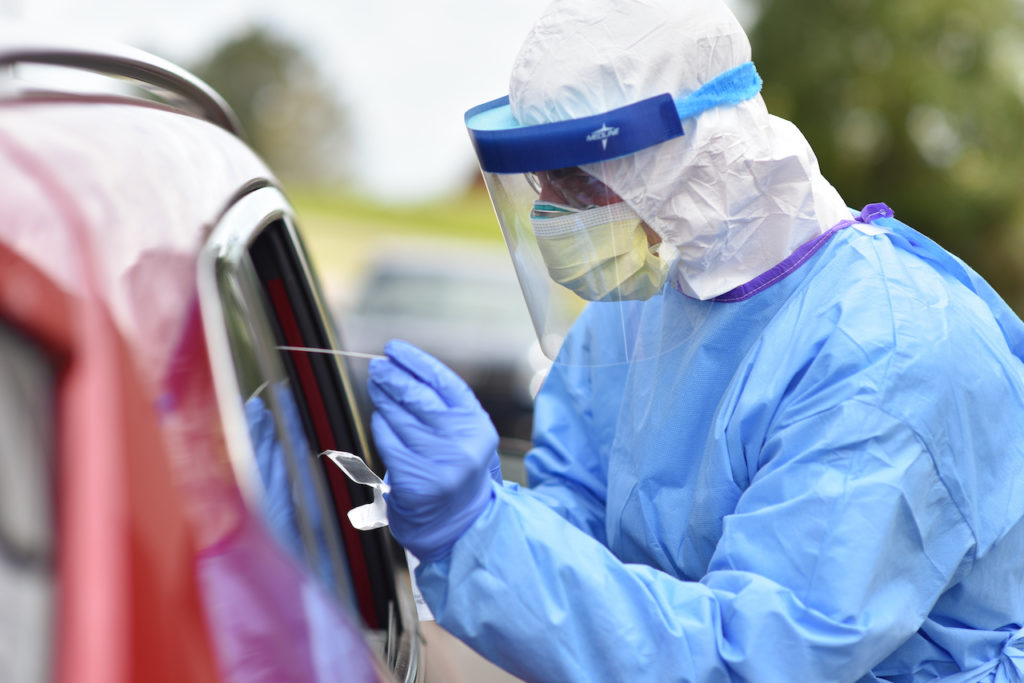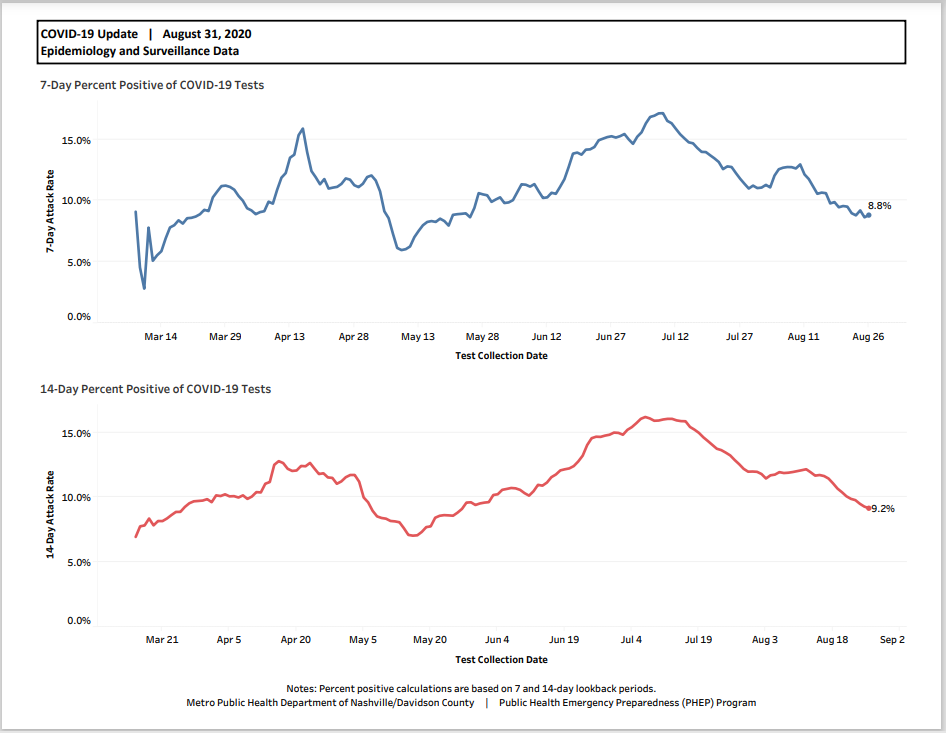
Coronavirus numbers in Nashville and Tennessee appear greatly improved over the long weekend. But that’s mostly because six months into the pandemic, the city and state have both made some flattering changes to how they track the data.
There are two key updates and both give a rosier picture to the pandemic.
At the state level, Tennessee narrowed the timeline for what’s considered an “active” case.
“At the beginning of our response, it was pretty widely assumed that a person may be in active infection for up to 21 days. But we’ve now learned that period is more like 10 to 14 days,” says Dr. Lisa Piercey, who leads the Tennessee Department of Health.
So the state has stopped counting cases as active after two weeks. This reduced the number of active infections statewide by roughly half.
Some places saw an even steeper drop. Williamson County improved by two-thirds, from 1,044 on Sept. 2 to 360 the next day. And active cases have been a key metric used by school districts, including Williamson’s, to decide what precautions to take or whether to even meet in-person.
Other regions are making similar changes, with a Texas county outside Austin using 10 days as the cutoff for active cases starting this month. There is no standard, which is why many national tracking projects for COVID-19, including Johns Hopkins University’s, don’t publicize the figure on their dashboards.
Positivity Rate Changes
In Nashville, the city altered the way it tabulates its positivity rate — which shows the general presence of the virus and the availability of testing.
There are various ways to reach this figure because it depends on who is included in the denominator. Generally, the idea is to divide the number of positive tests by the total number of tests. But many people are tested twice to make sure they’re no longer infectious.
Nashville was disregarding those second tests, since they’re more often negative. But last week, the Metro Public Health Department decided to start adding them.
“This method that we’re doing now is how all the national, well-trusted sources are doing it,” says Dr. Alex Jahangir, chair of the coronavirus task force. “It’s never been about one metric.”
The more favorable formula was also adopted by the state several months ago. And Tennessee wasn’t alone. Minnesota also made a similar change.
Jahangir says Nashville’s adoption will make it easier for the city to compare its status with other counties and the state as a whole.
The update also happens to drop the rate by two points, which is now below 6%. But Jahangir notes that the trend lines stay the same, ordering the health department to release charts for comparison.

This chart released by the Metro Public Health Department shows the old way of calculating Nashville’s positivity rate.

This chart released by the Metro Public Health Department shows the new way of calculating Nashville’s positivity rate.
In both instances — Tennessee’s change to active cases and Nashville’s positivity rate update — there was nothing wrong with the original method, says epidemiologist Gypsyamber D’Souza of Johns Hopkins University.
“It is worrisome to change the way something is being measured in the middle of a pandemic, especially when it’s done in a way to make rates and cases look lower,” she says.
If changes have to be made, D’Souza says health officials must be overly transparent and ensure anyone making decisions based on those metrics understand that the disease didn’t change, just the data.

